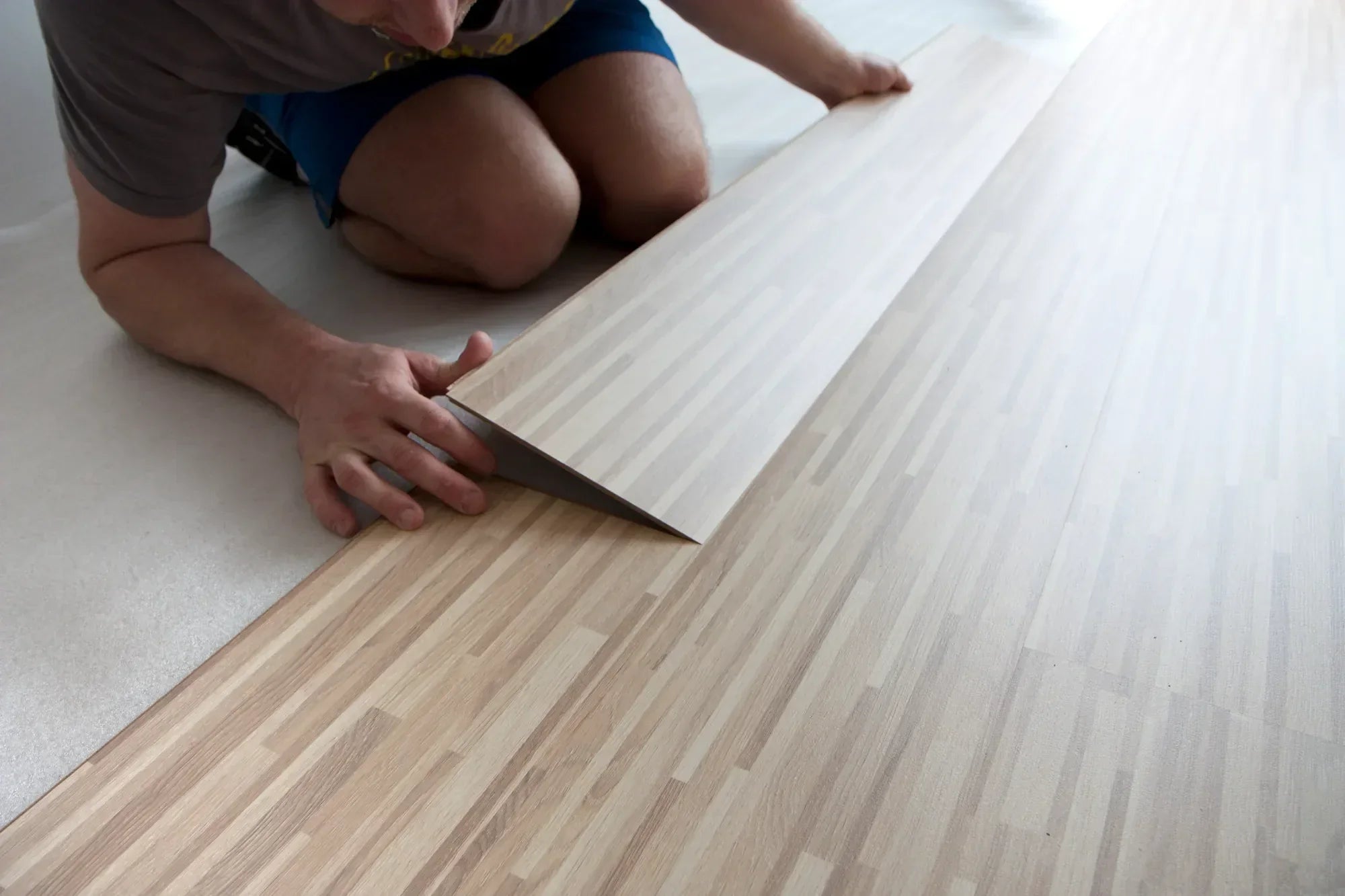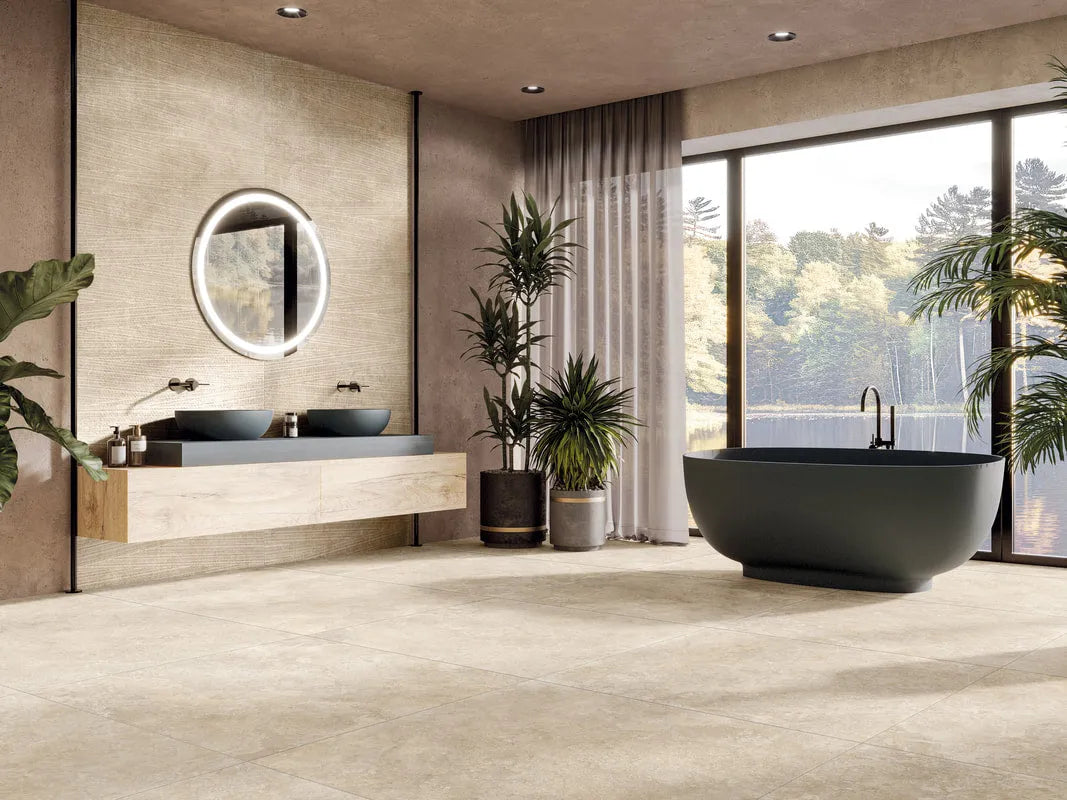Choosing the right bathroom tiles is a significant investment that will influence the aesthetics and functionality of your space for years to come.
Between the different types available, technical considerations, and current trends, it can be difficult to navigate. This comprehensive guide will help you choose the bathroom of your dreams.
Summary
- Summary
- Types of bathroom ceramics
- Advantages and disadvantages of each material
- How to choose according to your needs
- Installation and costs in Quebec
- Maintenance and upkeep
- Common Mistakes to Avoid
- Conclusion
- FAQ
Types of bathroom ceramics
Traditional ceramics (double-fired)
Traditional ceramic remains a popular choice for its versatility and affordability. Made from a mixture of clay, talc, and sand, it offers a lightweight and easy-to-work solution. Its glazed surface makes it moisture-resistant, making it suitable for humid environments.
This option is particularly suitable for walls and low-traffic areas. Its main advantage is its ease of cutting, allowing for complex installations around sanitary fittings.
Porcelain stoneware (single-fired)
Porcelain stoneware represents an evolution of traditional ceramics. This material, composed of quartz, clay, and feldspar, offers superior strength and reduced water absorption. White-body porcelain stoneware is an ideal solution for your walls.
Its higher density gives it better resistance to shocks and temperature variations, essential qualities in an environment where humidity and thermal changes are constant.
Porcelain

Porcelain, often considered the highest quality, is distinguished by its kaolin-based composition and its very high-temperature firing. This manufacturing method produces an extremely dense and non-porous material.
For a premium flooring solution, porcelain offers exceptional resistance to water, stains, and wear. It's ideal for floors, even in high-traffic areas like entryways.
Still undecided? Learn more about the differences between porcelain and ceramic in our most recent article on the subject.
Advantages and disadvantages of each material
| Kind | Benefits | Disadvantages |
|---|---|---|
| Traditional ceramics | Affordable price, easy to cut, wide aesthetic choice | More porous, limited shock resistance |
| Porcelain stoneware | Good value for money, decent durability, versatile | More complex cutting, higher weight |
| Porcelain | Maximum resistance, very low absorption, durability | Higher price, specialized installation required |
How to choose according to your needs
Depending on the area of application
For walls, traditional ceramic or porcelain stoneware tiles are usually sufficient. These materials provide adequate protection against moisture while allowing for easier installation.
Floors require special attention. Porcelain is the optimal choice for its water and shock resistance. If your budget is tighter, quality porcelain stoneware may be an acceptable compromise.
According to your budget
Porcelain represents a larger initial investment, but its exceptional durability makes it an economical choice in the long run. For a more modest budget, traditional ceramic wall tiles and porcelain stoneware floor tiles offer excellent value for money.
Depending on the style you are looking for
Each type offers different aesthetic possibilities. Traditional ceramics excel at reproducing natural materials, while porcelain allows for more sophisticated material effects and larger formats.
Installation and costs in Quebec
Material costs
- Traditional ceramic : $3 to $8 per square foot
- Porcelain stoneware : $4 to $12 per square foot
- Porcelain : $5 to $20 per square foot
Installation costs
Installation in Quebec generally costs between $7 and $15 per square foot. This price includes surface preparation, installation, and finishing. Complex projects or projects requiring extensive preparation, more delicate installation, or extensive cutting can reach $35 per square foot.
Factors influencing costs
- Surface preparation : A failing subfloor may require additional work
- Pattern complexity : Herringbone or diagonal laying increases costs
- Accessibility : Tight spaces complicate installation
- Waterproofing : Shower areas require specialist waterproofing

Maintenance and upkeep
Daily maintenance
A well-maintained coating retains its shine for decades. For daily maintenance, a simple cleaning with clear water and a damp cloth is usually sufficient.
Deep cleaning
For a more thorough cleaning, white vinegar is a valuable ally against limescale. Use it neat on stubborn stains or diluted for regular cleaning. Baking soda effectively complements this natural approach for stubborn stains.
Joint maintenance
Seals are the weak point of any installation. Regular maintenance with a toothbrush and a mixture of baking soda and white vinegar preserves their watertightness and appearance.
Common Mistakes to Avoid
Choice errors
The first mistake is choosing a material that's unsuitable for its intended use. Avoid overly textured tiles in showers, as they trap dirt and make cleaning difficult. Similarly, mosaics with many joints require more intensive maintenance.
Installation errors
Waterproofing is a crucial aspect that is often overlooked. Improperly installed siding can cause significant water damage. Make sure your installer uses the right waterproofing products and techniques.
Preparation errors
An improperly prepared surface compromises the durability of your installation. The substrate must be solid, clean, dry, and perfectly flat. Irregularities affect the installation and can cause premature cracking.
Conclusion
Choosing the right bathroom tile requires considering your specific needs, budget, and aesthetic preferences. Whether you choose traditional ceramic, porcelain, or stoneware, each material offers distinct advantages suited to different uses.
Investing in quality flooring that's properly installed and maintained will guarantee years of satisfaction. Don't hesitate to consult professionals to help you make your choice and ensure a perfect installation.
Are you planning a renovation project and looking for expert advice on choosing your bathroom tiles? The Emard Couvre-Planchers team will assist you in your selection and offer you the best solutions adapted to your needs and budget. Contact us today for a personalized consultation.
FAQ
What is the best bathroom ceramic tile for floors?
Porcelain is the optimal choice for flooring thanks to its very low water absorption and exceptional durability. Porcelain stoneware is an attractive alternative for a more modest budget.
How much does it cost to install bathroom ceramic tiles in Quebec?
Installation generally costs between $7 and $15 per square foot in Quebec, depending on the complexity of the project. This price includes preparation, installation, and basic finishing.
How do I maintain my bathroom ceramics?
Daily cleaning with clean water is usually sufficient. For a deeper clean, use white vinegar for limescale and baking soda for stubborn stains.
What is the difference between ceramic and porcelain for bathrooms?
Porcelain, being denser and less porous, offers superior resistance to water and impact. Traditional ceramic, being more affordable, is well suited for walls and low-traffic areas.



